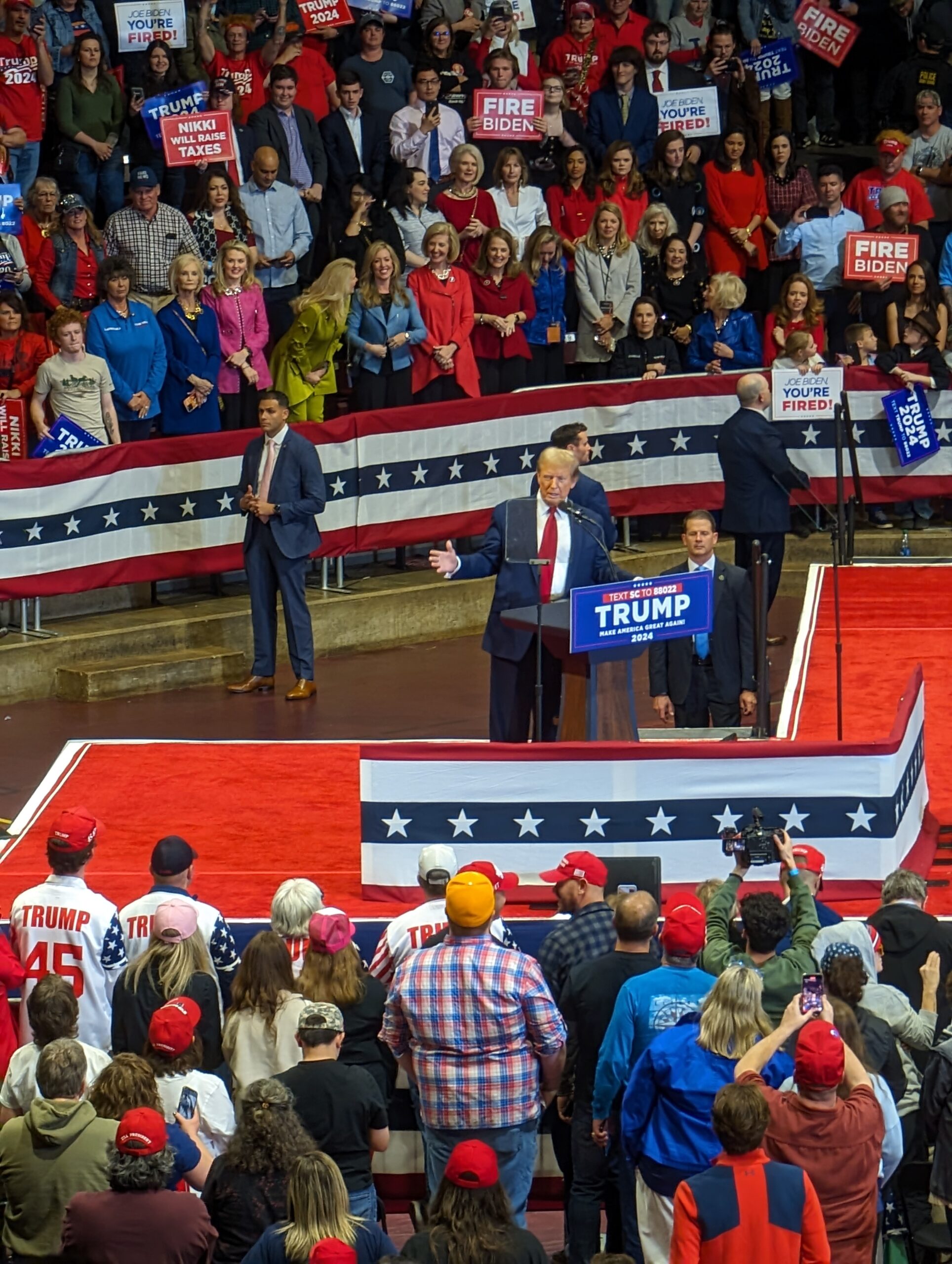After the decade-defining COVID-19 Pandemic, the arts community has been navigating the many obstacles that the moment in history has placed in front of it.
While students were both more resourceful and creative while working from home, faculty and staff also had to be creative in their work.
Department of Fine Arts Chair and Associate Professor of Fine Arts with knowledge in the area of Emerging Technologies in the Arts, Karen Oremus said, “I think many of us can think outside of the box when it comes to the home studio. Shaun Cassidy for example taught sculpture remotely and had students make work with the materials in the natural environment around them. Myles Calvert taught printmaking with take-home kits and presses. He even had a project where students screen-printed imagery onto the ground with flour.”
After the end of lockdown, there has since been a noticeable increase in enthusiasm to work and create in person.
Assistant professor of fine arts, Stephanie Sutton, with a specialization in photography and time-based media said, “There is a newfound appreciation for hearing the same things and being able to move around one another as we make. I have seen new interest in analog processes like sculpture and darkroom photography. For the students who were here before the pandemic, they seem particularly energetic about being back in the studio with faculty after weathering the storm together.”
While Sutton’s work as an artist has been concerned with isolation and how the screen can reflect or mediate individual lived experiences, the pandemic’s impact of social connection, the use of nonverbal language, and the lack of facial expression have propelled her research.
“I am curious about the phenomenon of looking at the compulsion to look at your own square in Zoom over others when talking yet longing for full-face conversations in person again. The role that my preferred medium of performance for the camera has helped us manage social disconnection with platforms like TikTok, Zoom and dating apps,” Sutton said.
While halting live performances for theatre professionals, art exhibitions were canceled for a year, shows were often intricately scheduled and planned far in advance. Many visual artists were forced to readjust, sparking an influx in online exhibitions and outlets to sell and share their work from home.
“The rise of NFTs also offered new opportunities for artists to make income – if they were tech-savvy and willing to take a risk in an untested market. During lockdown, art collectors were stuck at home, unable to go out to galleries but they were also spending lots of money to make their homes more comfortable – which meant buying more art. Artists who were able to be flexible and shift quickly had record sales during lockdown. Artists who were not able to reinvent their market did not fare so well,” Winthrop University CreatorSpace Interdisciplinary Technology Lab Coordinator and Fort Mill High School Art Educator, Anna Dean said.
Dean completed her residency at the McColl Center in a partnership with Atrium health where she created her body of work titled, “One Year of Covid.”
“Covid had a really interesting impact on my personal work. In March 2020, I was installing my MFA thesis exhibition here at Winthrop. All the pieces I had been constructing were so large that I had never even seen them all assembled. I had been working on this body of work for three years, and I was up on a ladder, installing a projector in the gallery when they came around campus and told me I had to leave because the Governor just shut down the state of SC. I went home and spent two days laying in my backyard – kind of in shock, trying to figure out what I was going to do with my life since I was not going to graduate, and my summer solo exhibition that I scheduled in another gallery was obviously not going to happen either,” Dean said.
“I saw an advertisement for an artist residency at the McColl center that was a partnership with Atrium Health. I applied and was amazed that I was selected for the residency. My project during my residency was an investigation into the impact of Covid on the Charlotte community. I spent months interviewing front-line workers at Atrium. I interviewed Dr. Passeretti, infectious disease expert, who was the first person in NC to get the vaccine. While I was interviewing her, I asked her, ‘What do you do with the empty vaccine vials?’ She agreed to save them for me.”
Weeks later with over 6,000 empty vaccine vials in her studio, Dean was able to visit the mass vaccination event at Bank of America Stadium in Charlotte where she witnessed as 20,000 people received the second dose of the vaccine.
“It was an incredibly emotional event, and I am forever grateful to have been a witness to that moment in history,” Dean said.
Using the empty vaccine vials to build a sculpture and a large twelve-foot panel, incorporating data related to the pandemic, Atrium purchased both of Dean’s pieces and they will be installed on Atrium’s new campus later this year.
Dean made two more of the vaccine vial sculptures. One of which will be on display at the Mint Museum in Charlotte from March through June, as part of the Coined in the South exhibition.
“I think the entire art department was forced to take a step back from the resources and space we have on campus. We had to think of more cost-effective materials and find out what we were able to create at home in the space we have available to us, at least in sculpture,” Senior art major, Devlin Thayne said. “I’ve seen a lot less collaboration following the initial outbreak in 2020. It’s only recently gotten easier to talk to my classmates, like bouncing ideas off of each other.”
With the rise of Zoom and virtual meetings, artists have been expanding their Art Talks to larger audiences.
“Now, I regularly attend talks by artists in galleries all over the world. I will be curious to see how the evolution of virtual reality shifts the way we view and interact with art,” Dean said.
With an emphasis on the importance of community since the end of the mandated quarantine, Oremus said, “We can make great art in solitude, but we make much better art when we have the support of our creative community of faculty and peers.”




